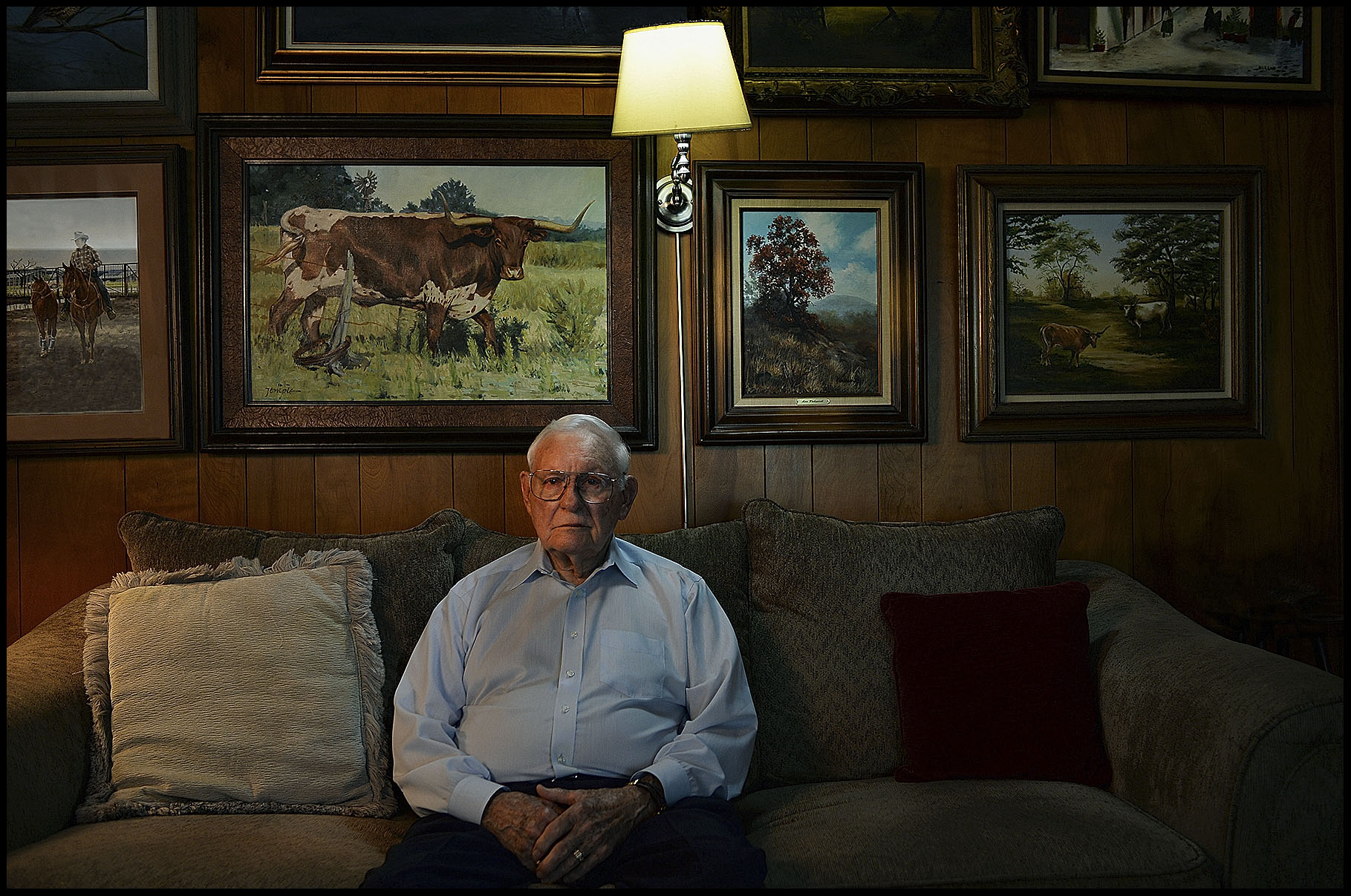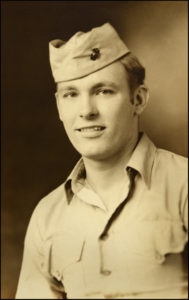
Jerome Knaupp
Iwo Jima veteran
Jerome Knaupp
Corporal, USMC
1943–1946

Pvt. Jerome Knaupp
San Diego, CA, 1943
On Iwo Jima: I heard someone in front of me say, ‘Fix bayonets, they’ve broken through.’ That was enough to get your attention.
I went to Edgewood High School in San Antonio—grew up there. I graduated in May, 1943, and for the next six months I worked for the Southern Pacific Railroad in Marfa, Texas. They had a big old air base there with German POWs from the Africa corps. My job was to watch them unload the railroad cars for the air base. Those guys marched to work every morning singing. They thought they were still going to win, I guess.
I joined the Marine Corps in November, 1943. The Marines always had the best advertisements. It was just what I was going to do. We were out of boot camp in early January, 1944 and went to Camp Pendleton where they were putting the 5th Marine Division together. I was in the 2nd Battalion, 26th Regiment. We were shipped to Hawaii where we trained for six months.
The first week in January, 1945 we boarded ship. We knew we were going to invade an island, but we had no idea which one. We were aboard that ship for 54 days. It was miserable, zig zagging, bodies stacked six high trying to sleep—miserable and hot. I didn’t have any idea what we were getting into. I don’t think the generals did either.
On February 19, 1945 I was in the second wave that landed on Iwo Jima. I was a mortar man—I carried the tripod. We had well over 100 pounds with the mortar, plus the pack and the rifle. We were on the beach and a guy comes up and leans over and says, ‘Do you know where the 13th and…’ About that time a mortar shell hits pretty close. Doesn’t hit us, but it almost decapitated him. We had been on the beach about 10 minutes. There were lots of occasions like that. It is miraculous I lived. We had well over 90% casualties. So many of the top officers were wounded or killed.
There are four guns in a mortar platoon. One guy on the third team was almost killed on Tarawa. He just knew that he was going to die on Iwo. A mortar came down and hit him in the back, and it killed the whole team.
My worst day was the night of the 29th of February. It was pretty cold and raining. We were sitting on ammunition cans in a 4x4x4 gun hole. I heard someone in front of me say, ‘Fix bayonets, they’ve broken through.’ That was enough to get your attention. We waited 15 minutes, and nothing happened. Then they passed the word that they had stopped them. That was frightening.
I remember the Battleships Washington and Texas firing those big guns; it would turn the ship sideways. I saw them raise the flag. The last days there were really just clean up. I saw a Japanese officer run out of a cave with his sword held high and two riflemen following him. I thought they might try and capture them, but a machine gun just cut them down.
After Iwo, we went to China to pick up 200 Japanese prisoners and brought them back to Japan. You would see pictures of Japan and there would be complete destruction. We’d walk through some of the cities and there wouldn’t be anything there.
The end of September, 1946 I got out of the Corps. They used high pressure sales to get us to re-up. I had had enough. When you see everyone around you being wounded or killed, it’s hard to stay. I came back to San Antonio.
When I got back, the only thing I took advantage of was the schooling. I graduated from St. Mary’s in 1950. The government paid everything. I went to work for the City of San Antonio and became the personnel director of civil service. I stayed there 1-1/2 years. Then I went into the home-building business with my brother-in-law. I stayed in that for 20 years; did quite well. I retired and my wife and I traveled and saw most of the world. {08-04-2015 • San Antonio, TX}